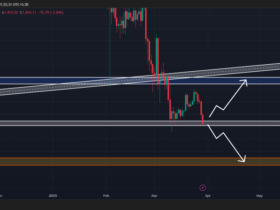According to Ethereum co-founder Vitalik Buterin, the Reduced Instruction Set Computing V (RISC-V) is a key element in Ethereum’s virtual machine (EVM). Buterin noted that the open-source instruction set is crucial in the existing roadmap for formal verification that proves validity.
you should talk to @alexanderlhicks, a large part of the existing roadmap for formal proof of validity verification involves creating a verified implementation of the EVM in RISC-V
— vitalik.eth (@VitalikButerin) October 27, 2024
The Ethereum co-founder acknowledged this while responding to a blockchain developer who asked for his permission to work on an aspect of the EVM. The developer proposed that Ethereum’s beacon chain run the RISC-V and run the EVM within it. According to the developer, that would “make perfect sense.” Buterin referred the developer to Alexander Hicks, an Ethereum team member working on formal certification and AI.
Related: Ethereum Vitalik Buterin’s vision for user-friendly crypto transactions is gaining momentum
Meanwhile, the developer cited Buterin’s EVM as the most economical, with the highest execution risk. Therefore, he proposed to manage the project and introduce RISC-V on the beacon chain before running the EVM in the custom chain.
It is worth noting that RISC-V is an open-source instruction set architecture, based on established computing principles with limited instruction sets. The protocol allows implementation by anyone, even those without a license. The fundamental role of RISC-V in computing is to dictate how a processor executes instructions, with an instruction set architecture defining the interface between software and hardware.
In particular, RISC-V emphasizes simplicity and efficiency in executing instructions. Therefore, it facilitates simplified chip design, reduces complexity and enables easier optimization of hardware and software interactions.
Related: Vitalik Buterin calls for a standardized protocol to bridge Ethereum’s Layer-2 gap
After getting the green light from Buterin and noting his openness to improving the Ethereum network, the developer added his original proposal. He suggested reevaluating Ethereum’s execution layer (EL) and changing how it would work. According to the developer, this could involve a simplified process of packaging QEMU into the engine API.
Disclaimer: The information in this article is for informational and educational purposes only. The article does not constitute financial advice or advice of any kind. Coin Edition is not responsible for any losses arising from the use of said content, products or services. Readers are advised to exercise caution before taking any action regarding the company.
Credit : cryptonews.net













Leave a Reply